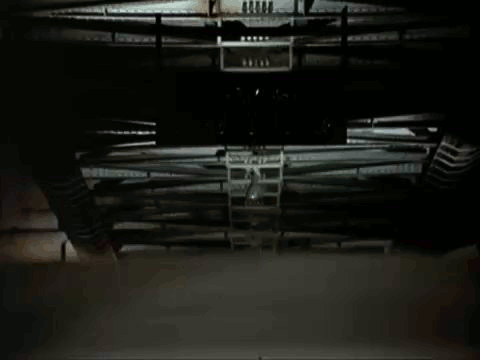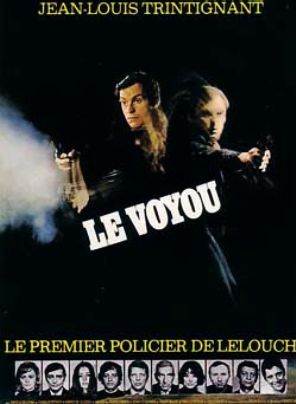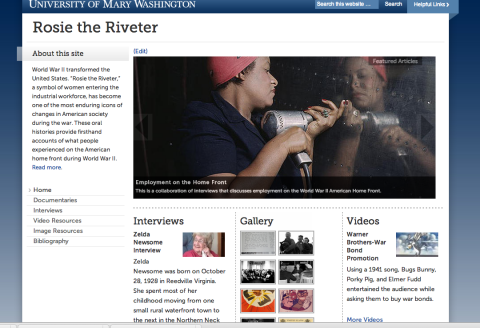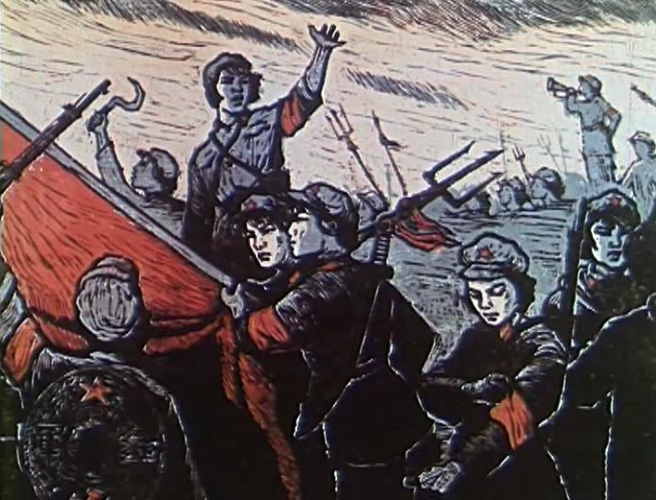 This semester Sue Fernsebner is teaching a Chinese History through Film class at UMW, and after looking at the syllabus I couldn;t help put take the course. I was in Los Angeles in the early 1990s during the apex of the 5th Generation film movement. I saw films like Raise the Red Lantern (1991) (which you can see in HD in its entirety here), Farewell My Concubine (1993), To Live (1994), and numerous other films in the theater. I loved the films—Raise the Red Lantern and Farewell My Concubine were an opulent breadth of aesthetic fresh air. I’ve remained intrigued by those films as a moment in Chinese history in which a culture was coming to terms with a very new approach to Communism, Capitalism, and a complex tradition of revolution that we’re still marveling about internationally. All made that much more current by the fact that the twenty years since those films were made has witnessed the emergence of China as economic superpower—a process those films were dealing with both indirectly through history as well as satirically through more contemporary tragic comedies like Ermo (1994) —which is also on the syllabus! Given that, I figured there would be no better time to study the history of China through its cinematic tradition—my favorite way to look at culture.
This semester Sue Fernsebner is teaching a Chinese History through Film class at UMW, and after looking at the syllabus I couldn;t help put take the course. I was in Los Angeles in the early 1990s during the apex of the 5th Generation film movement. I saw films like Raise the Red Lantern (1991) (which you can see in HD in its entirety here), Farewell My Concubine (1993), To Live (1994), and numerous other films in the theater. I loved the films—Raise the Red Lantern and Farewell My Concubine were an opulent breadth of aesthetic fresh air. I’ve remained intrigued by those films as a moment in Chinese history in which a culture was coming to terms with a very new approach to Communism, Capitalism, and a complex tradition of revolution that we’re still marveling about internationally. All made that much more current by the fact that the twenty years since those films were made has witnessed the emergence of China as economic superpower—a process those films were dealing with both indirectly through history as well as satirically through more contemporary tragic comedies like Ermo (1994) —which is also on the syllabus! Given that, I figured there would be no better time to study the history of China through its cinematic tradition—my favorite way to look at culture.  Not only do I plan to attend the class sessions, read along, and blog about the films, I also want to start experimenting with ways of providing resources for film classes like this (there are far too few at UMW, but that is another post). Our idea at DTLT has always been that the work we’ve done with ds106 was not simply an edtech group going rogue, which we admittedly did, but always with an eye on bringing some of those experiences back to a wide range of disciplines. Film lends itself nicely to the work we did in ds106, and having a course at UMW being taught by a Chinese scholar who has done amazing work designing and running web-mediated discussions through blogs and beyond them for years, it seemed like a great opportunity to start experimenting in different ways. And while I have to admit that this idea is still unfolding as I write this, in my mind we might be able to start pushing the idea of criticism as an act of both appropriation and art—a flag flying revolution, if you will!
Not only do I plan to attend the class sessions, read along, and blog about the films, I also want to start experimenting with ways of providing resources for film classes like this (there are far too few at UMW, but that is another post). Our idea at DTLT has always been that the work we’ve done with ds106 was not simply an edtech group going rogue, which we admittedly did, but always with an eye on bringing some of those experiences back to a wide range of disciplines. Film lends itself nicely to the work we did in ds106, and having a course at UMW being taught by a Chinese scholar who has done amazing work designing and running web-mediated discussions through blogs and beyond them for years, it seemed like a great opportunity to start experimenting in different ways. And while I have to admit that this idea is still unfolding as I write this, in my mind we might be able to start pushing the idea of criticism as an act of both appropriation and art—a flag flying revolution, if you will! 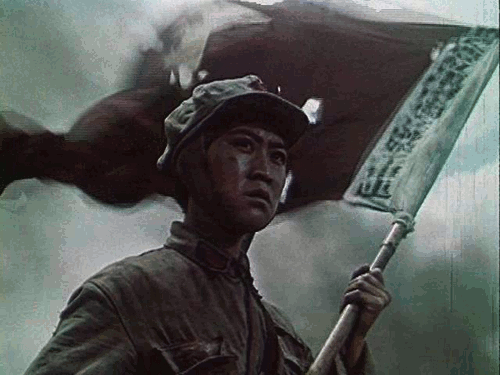 So, as an instructional technologist, how can I help this class get access to the very source code of the culture they are watching? How do we open up the film artifact itself to be written upon? What’s more, given the films are Chinese, the question of copyright changes dramatically. This past week’s film was The Red Detachment of Women (1961)—read a synopsis of the film on the course site—a Communist propaganda film that isn’t under copyright, just like all Chinese films post-1949, right? Isn’t U.S. copyright law an exploitative tool that enables the corporate elite to demand on-going ground rent from cultural objects? A way of locking us out of our mediated culture as a means of controlling us, if you will 🙂 That is one of the fascinating things about China right now, U.S. copyright laws are not enforced, and the idea of making the film shareable and giving students the ability to access a digital version they can hack to curate scenes, take stills, mashup, or just create a beautiful GIF is eminently possible—and legal. Hot dog! Add to that the fact that UMW now has a very snazzy and slick place to start storing that culture: UMW Media –who says grades don’t matter? —though the UMW Media development, again, deserves its very own post. So, I’m using this post to breifly talk about the film in light of the discussion we had this Wednesday night, while a the same time sharing out scenes, stills, and GIFs that struck me as memorable. I’ll try and go light on the commentary given how long-winded this post already is. The Red Detachment of Women is pretty awesome cinematically as far as propaganda films go, there are a ton of low angle shots (à la Orson Welles ‘ Citizen Kane and Leni Riefenstahl’s Triumph of the Will) that make our proletariat heroines both powerful and noble at once (see the flag flying GIF above, or the shots below for just a few examples).
So, as an instructional technologist, how can I help this class get access to the very source code of the culture they are watching? How do we open up the film artifact itself to be written upon? What’s more, given the films are Chinese, the question of copyright changes dramatically. This past week’s film was The Red Detachment of Women (1961)—read a synopsis of the film on the course site—a Communist propaganda film that isn’t under copyright, just like all Chinese films post-1949, right? Isn’t U.S. copyright law an exploitative tool that enables the corporate elite to demand on-going ground rent from cultural objects? A way of locking us out of our mediated culture as a means of controlling us, if you will 🙂 That is one of the fascinating things about China right now, U.S. copyright laws are not enforced, and the idea of making the film shareable and giving students the ability to access a digital version they can hack to curate scenes, take stills, mashup, or just create a beautiful GIF is eminently possible—and legal. Hot dog! Add to that the fact that UMW now has a very snazzy and slick place to start storing that culture: UMW Media –who says grades don’t matter? —though the UMW Media development, again, deserves its very own post. So, I’m using this post to breifly talk about the film in light of the discussion we had this Wednesday night, while a the same time sharing out scenes, stills, and GIFs that struck me as memorable. I’ll try and go light on the commentary given how long-winded this post already is. The Red Detachment of Women is pretty awesome cinematically as far as propaganda films go, there are a ton of low angle shots (à la Orson Welles ‘ Citizen Kane and Leni Riefenstahl’s Triumph of the Will) that make our proletariat heroines both powerful and noble at once (see the flag flying GIF above, or the shots below for just a few examples). 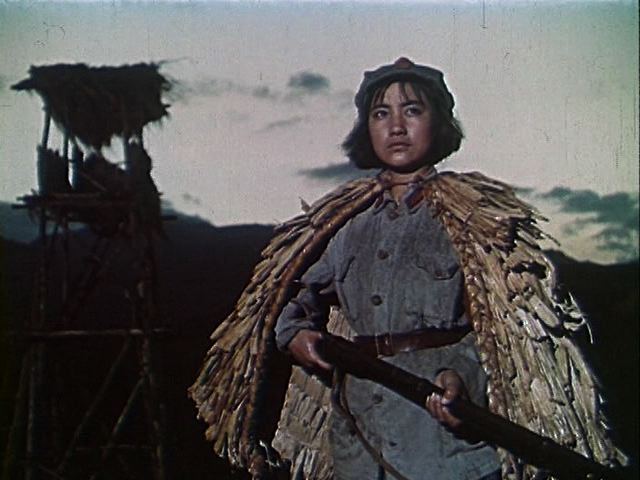
The filmic celebration of the working class has to first establish a diabolical ruling class, and that is done pretty effectively with the evil landlord NAN Batian, a character who was quite convincing despite his being a caricature.
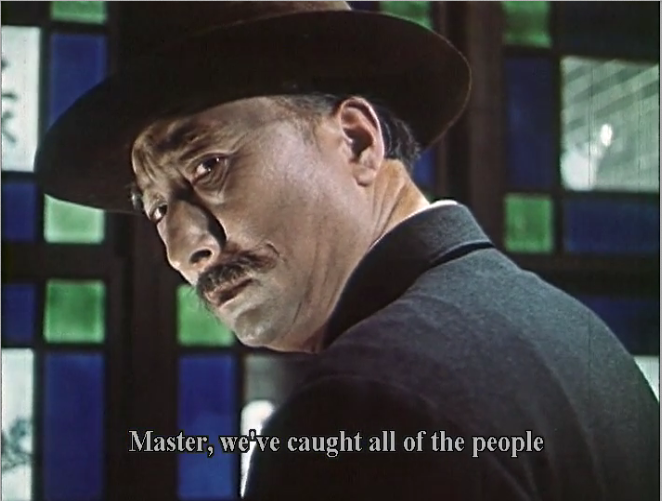
The other thing the movie sets up quite well early on is the sense of hopelessness amongst the most populations most abject, i.e., slaves, servants, and peasants. The sense of feudalism is strong. The film’s heroine, WU Qionghua, is a slave who refuses to live in chains, and has just been caught trying to escape her enslavement to NAN Batian as the film opens. As luck would have it, she encounters a communist party member passing as a rich expatriate, HONG Changqing, who points her to the communist camp on Hainan Island where she joins the Red Army and begins her education in revolution. On the way to the camp she encounters a woman who is a slave of another kind. In the following scene, Wu meets her soon-to-be-friend Lian and learns that at the age of ten she had been sold to a family in order to marry their dead son. She is effectively “married to a ghost” (as Fernsebner put it very well), which was not necessarily an uncommon practice. The scenes ends with Wu saying “there is no way out,” which forwards the basic argument of the remainder of the film: the only way for the proletariat to escape the abuse of wealthy landowners that accompanies the feudalism of mainland China is a nationwide, coordinated class revolt.
Note: The following videos are loading from UMW Media and may be a bit slow given how new that service is (and how big my videos are 🙂 ). Any feedback on your experience with how fast or slow they are would be greatly appreciated. Alos, there should be an easy way to download them, let me know if you see that option.
Idol Marriage Another topic that emerged in week’s class discussion was the idealized vision of communism in the film.¹ The pastoral montages of the Communist outpost/village transform the abject, brutal state of peasant labor portrayed early on in the film into a harmonios, communal family of sorts. The shots of schooling, washing clothes in the stream, giving each haircuts, parties, music, marriages, etc. are obviously “propaganda,” but at the same time they’re only doing what movies do best—creating a sense of desire in the viewer. An idea of something that you want to believe in, defend, and even die for—most U.S. commercial films are filled with the same kind of propaganda—just directed towards the engendering of capitalist subjects rather than communist. So to define the idea of propaganda film as political only when it is promoting fascism (think Riefenstahl’s Triumph of the Will and Olympian) or communism is to miss the larger point of how most popular, commercial U.S. films are propaganda to varying degrees—we’re just to embedded within consumerist culture to make these distinctions. In tha tregard, the label propaganda film always seems problematic to me because it often is only pulled out to define films that support some political ideology other than capitalism (which is intentionally submerged within the rhetoric of desire—for which film to this day remains the perfect medium). While watching this film I tended to think it had far more in common with 1950s melodramas by Vincent Minnelli and Douglas Sirk than the U.S. World War II propaganda films of the 40s. (but more on that shortly) .
A Pastoral Montage of Communism And here are a couple of GIFs of the band playing at a communist wedding. For me, the idealized vision of communism within this film mark some of my favorite moments. What’s more, the release of this film corresponds historically with the fallout from the colossal disaster that was the Great Leap Forward—a communist plan for industrialization that literally left millions of peasants (the same people being idealized in this film) starving throughout the countryside.
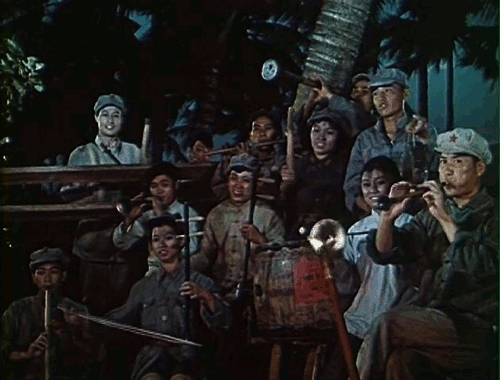
The Red Army Wedding band
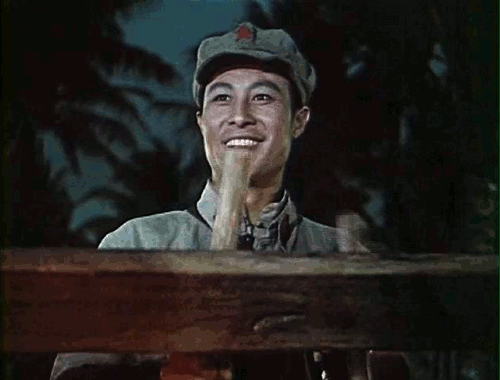
HONG Changqing on the drums
Possibly my favorite scene, and one of the most confounding as well, is the “confinement room” scene where it’s suggested (not commanded, mind you!) that Wu reflect and atone for her selfish attempt to exact personal revenge on NAN Batian at the expense of the collective (as you might expect, the relinquishing of self for the greater good of the party is a common theme throughout the film). What’s bizarre about this scene is the way in which sexuality, fulfillment, and communism become interestingly blurred. When Wu is reflecting on ehr transgressions she notes how quickly Hong has climbed the ranks fo teh Communist party to which Lian replies: “Can we conclude that men are better than women?” To which immediately discounts such a possibility—which frames an world of parity which is still deeply desirable.
Soon after, however, Wu notes that “Secretary Changqing [Hong] also teaches us lessons and punishes us. However, when he punishes us we are sincerely convinced.” I’m not sure how the translation is of this scene because my Mandarin is non-existent, but it seems to me with this translation to be a blatant acknowledgement of the relationships between power, propaganda, and desire. And in many ways this entire scene is about this triangulation, more specifically a power dynamic undergirded by desire for communism, which given the mise-en-scene is mapped on Wu’s ostensible longing for Hong as a stand in for the Communist party (who, interestingly enough, is a male in a positon of power) that find its object of immediate desire in Lian framed by the intimacy of them in bed together. The scene of Lian and Wu figuring out the key to communist enlightenment is overtly homoerotic, suggesting how much the best moments of communist propaganda in this film have everything to do with female empowerment and desire—which is what Douglas Sirk’s 19650s melodramas are all about 🙂 You can see the entire scene in the video clip below, but first check out this animated GIF wherein the intimacy and climax of the scene unfold:
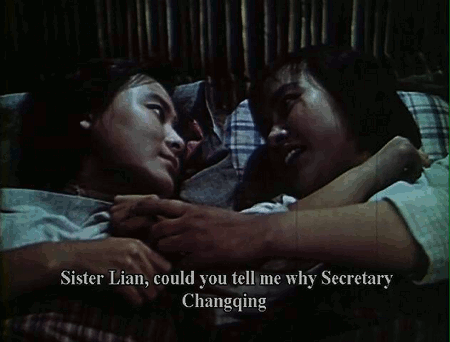
The Confinement Room
Another scene similar to the confinement room is when Wu is thinking about the ideology of Communism with Hong while they are studying the map together and Hong gives Wu a look into his own struggles with the rich, ruling class that killed his father for being part of a labor union. It is here that he teaches Wu that any proletariat can burn down one landowner’s home, but to change the society at its roots you need collective, class action to start a cultural conflagration (pretty good advice!) —the individual’s desires must be sublimated into a collective desire for equality. At what is most fascinating to me about this film is how much propaganda is portrayed throughout the film as an element of that desire—what seems a deeply effective approach to good cinema more generally, and an example of why what appears to be spoon-fed Communist doctrine is made far more complex by the interactions between bodies on the screen that intimate the desire behind the ideology—a tension of meanings and desires that make this much more than merely propaganda.
The Map Scene
As a final note, I kept thinking this film could also be a great remake for someone like Tarantino. The scene below, in particular, is an excellent look at the other side of revolution—violence, death, and the ultimate sacrifice. Something The Red Detachment of Women does not shy away from at all. I mean look at the following GIF, Wu is a badass Communist!
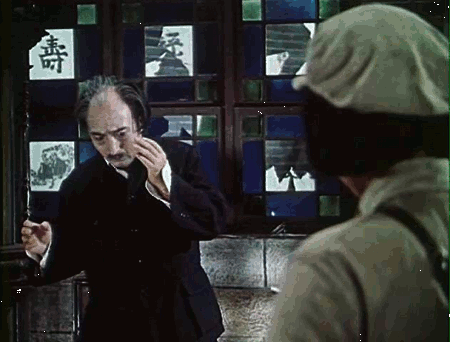 Note
Note
1. I really love how Fernsebner organizes the discussions in her class, everyone watches the film and then three students come to the front of the classroom to facilitate the discussion. She pops in and out of the discussion for clarification and to keep things moving, but the way in which the class responded to this format was really impressive to me. More than half the class talked, and they covered an impressive range of topcis and themes—I will be trying this format in the near future.


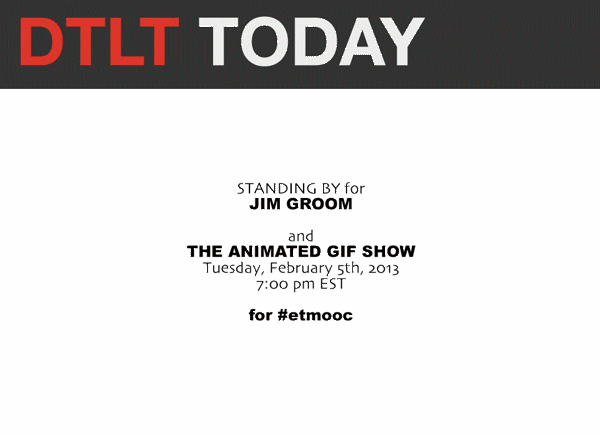 The Annotated and Recut Animated GIF version of The Jim Groom Animated GIF
The Annotated and Recut Animated GIF version of The Jim Groom Animated GIF 
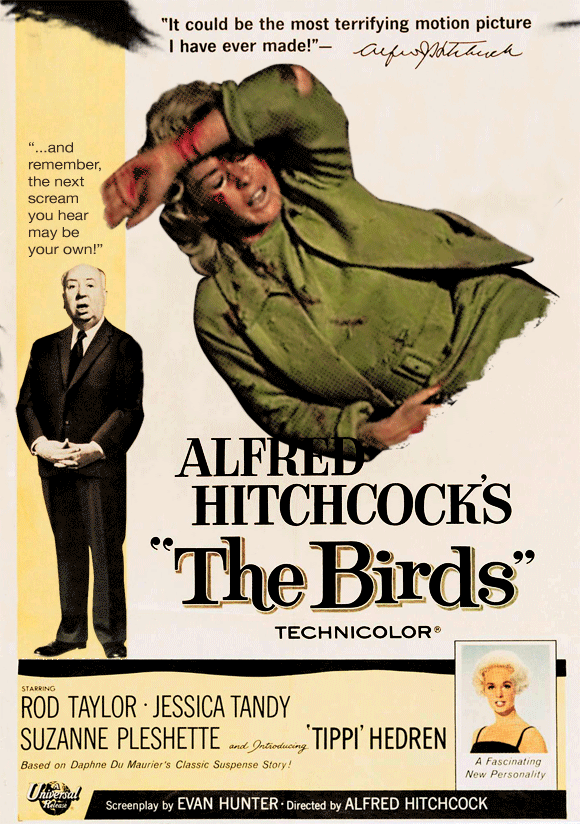



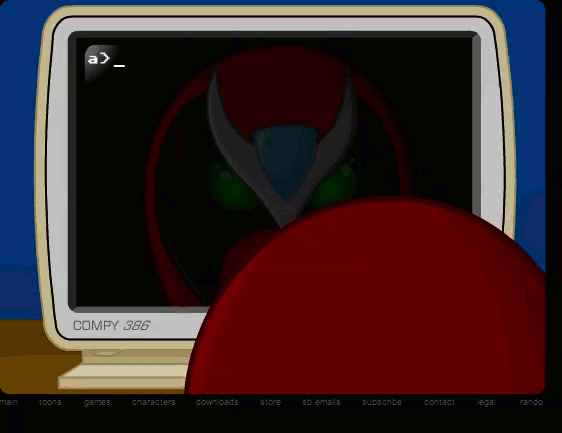

 I’ve been crazy this last month, and the proof is in the blog archive pudding: only eighteen god damned blog posts for January. I hope February proves to be a bit easier on the bava, but, with that said, January has been pretty awesome. In fact, this week seems like, to quote the oft blogging
I’ve been crazy this last month, and the proof is in the blog archive pudding: only eighteen god damned blog posts for January. I hope February proves to be a bit easier on the bava, but, with that said, January has been pretty awesome. In fact, this week seems like, to quote the oft blogging  This semester Sue Fernsebner is teaching a
This semester Sue Fernsebner is teaching a 
 So, as an instructional technologist, how can I help this class get access to the very source code of the culture they are watching? How do we open up the film artifact itself to be written upon? What’s more, given the films are Chinese, the question of copyright changes dramatically. This past week’s film was The Red Detachment of Women (1961)—
So, as an instructional technologist, how can I help this class get access to the very source code of the culture they are watching? How do we open up the film artifact itself to be written upon? What’s more, given the films are Chinese, the question of copyright changes dramatically. This past week’s film was The Red Detachment of Women (1961)—




 Note
Note

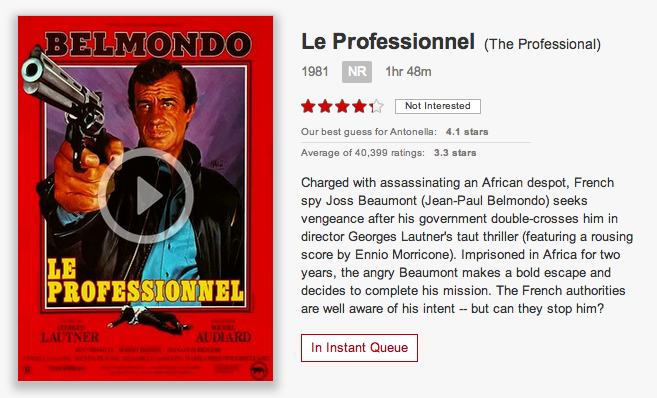
 If you’re looking for a good, theme-based double feature I have a treat for you, and if you have access to streaming Netflix in the U.S. (or can get your hands on a proxy) then you can get some instant gratification to boot. Anto and I have been digging on 1970s French crime films, in particular
If you’re looking for a good, theme-based double feature I have a treat for you, and if you have access to streaming Netflix in the U.S. (or can get your hands on a proxy) then you can get some instant gratification to boot. Anto and I have been digging on 1970s French crime films, in particular 